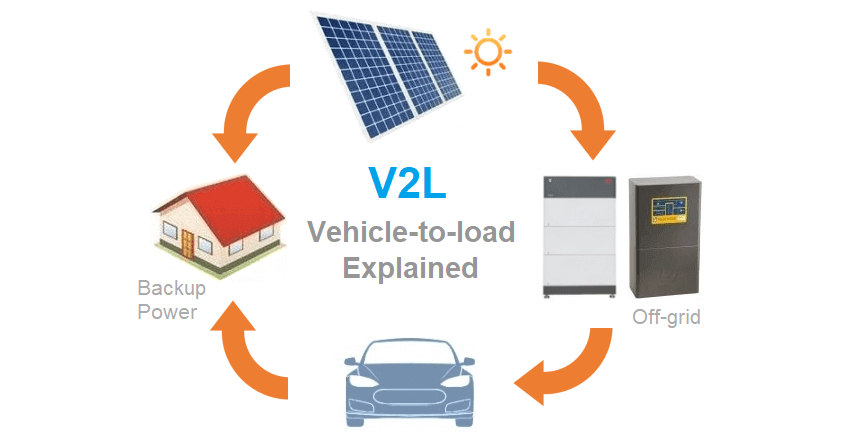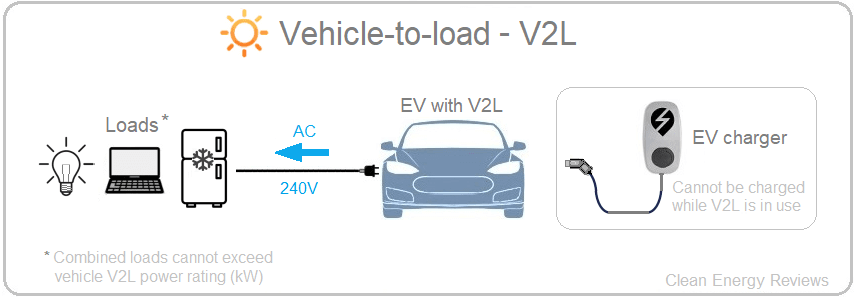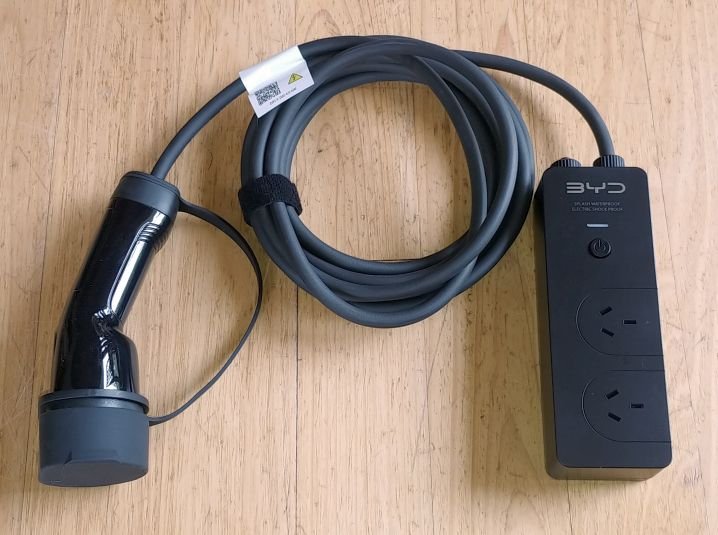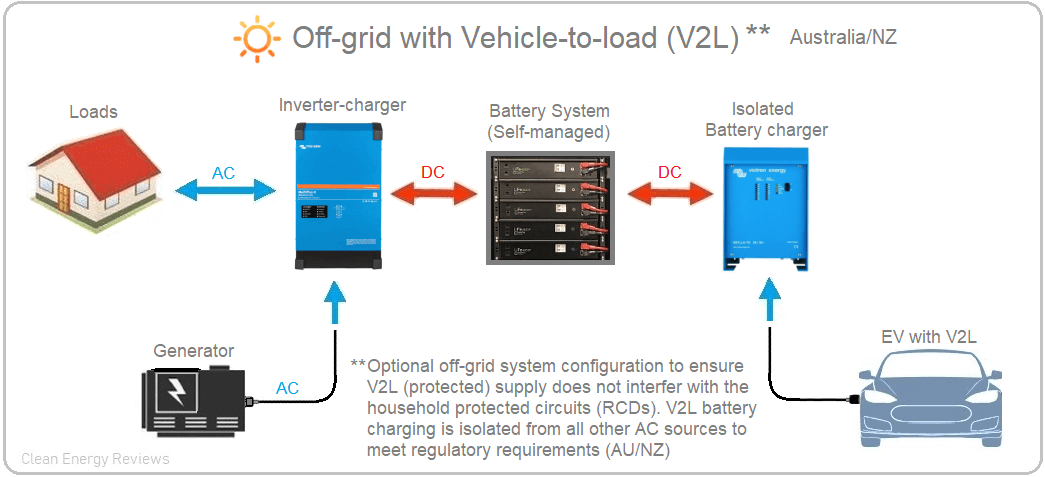Vehicle-to-load Explained - V2L for off-grid or backup power
What is Vehicle-to-load (V2L)?
Vehicle-to-load (V2L) is a feature that enables an electric vehicle to provide regular AC power to appliances or loads such as lights, laptops, TVs or a refrigerator. It is a relatively simple technology where the EV contains an integrated inverter to supply power via one or more AC outlets; it should not be confused with Vehicle-to-grid (V2G) technology which requires an additional, more advanced bidirectional charger. V2L power can be used for emergency backup power, like a backup generator, to run essential appliances via extension power leads. Another useful benefit of EVs with V2L is to charge other EVs that have run flat and become stranded.
While V2L is helpful for providing power while travelling or backup power at home, the same technology can significantly reduce an off-grid solar system's dependence on backup diesel and petrol generators. Additionally, V2L vehicles can be connected directly to a building via a permanent input to provide backup power quickly.
V2L is very different to V2G
People often confuse V2L technology with V2G (Vehicle-to-grid) bidirectional charging. These are not the same and are used for two very different purposes. V2L is much simpler and enables any regular household appliance to be powered by an electric vehicle using an extension power lead. On the other hand, V2G is far more complex and can feed power back into the electricity grid (or home circuits) using an external bidirectional charger. It could be argued that V2L is similar because it uses bi-directional power flow technology inside the vehicle to supply AC power. However, vehicles with V2L can only be charged with a regular EV charger. They will not work with a dedicated bidirectional charger that transfers high-voltage DC power to and from the vehicle via the DC connector. Learn more in our Bidirectional EV chargers explained article.
V2L Power Output Ratings
V2L power output is measured in either Amps (A) or Kilowatts (kW) and generally ranges from 10A to 15A (2.4kW to 3.6kW). Most EV manufacturers list the total kW power rating available via one or more AC outlets. For comparison, a standard household 240V power output is rated at 10A, equating to 2400W (10A x 240V), so any appliance used in a regular household outlet should work on an EV with V2L. Some EVs, such as the Hyundai Ioniq 5 and Kia EV6, have a 3.6kW power rating equivalent to a 15A outlet. The Ford F-150 lightning has the highest V2L rating of 9.6kW via four AC outlets. Some EVs do not have regular AC outlets inside the vehicle but instead require a V2L adapter connected to the vehicle’s charging port. For example, the BYD Atto 3 has a V2L adapter connected to a twin-socket 10A powerboard outlet, as shown in the image below.
BYD Atto 3 V2L adapter with 2 socket powerboard (10A)
It is important to emphasise that the output power rating is the maximum or peak rating, so using loads rated at the maximum for more than a few minutes may be problematic. In the same way, a modern backup generator should not be run at the limit; it’s recommended not to use loads rated above 80 to 90% of the power rating if they are being used for an extended period, especially in warm or hot weather. Anyone familiar with off-grid or battery inverters will understand that inverters have both a continuous and peak or surge rating; the inverter in an EV used to supply V2L is very similar. It would be very useful if EV manufacturers listed both ratings to prevent people from overloading the inbuilt inverter. Clean Energy Reviews conducted a V2L load test on the BYD Atto 3 to determine the true continuous and peak output power rating.
Vehicles with Vehicle-to-Load (V2L)
| Vehicle | Model | V2L power rating | AC Voltage | No of AC outlets | Available |
|---|---|---|---|---|---|
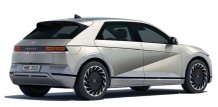 |
Hyundai Ioniq 5 | 3.6 kW | 240V | 1 inside 1 external | Now |
 |
KIA EV6 | 3.6 kW | 240V | 1 inside 1 external | Now |
 |
KIA EV9 | 3.6 kW | 240V | 1 inside 1 external | Now |
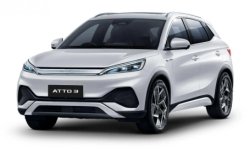 |
BYD Atto 3 | 2.4 kW * | 240V | 1 external | Now |
 |
BYD Seal | 2.4 kW * | 240V | 1 external | Now |
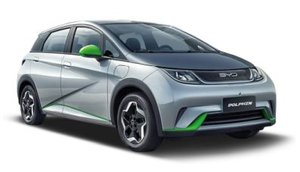 |
BYD Dolphin | 2.2 kW * | 240V | 1 external | Now |
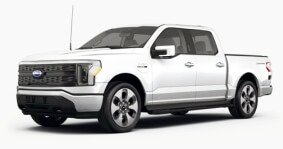 |
Ford F-150 Lightning | 9.6 kW | 120V / 240V | 4 external (tub) | US Only |
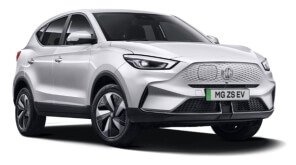 |
MG ZS EV (2022) | 2.2 kW TBC | 240V | 1 external | Now |
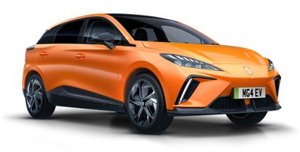 |
MG4 (2023) | 2.2 kW TBC | 240V | 1 external | Now |
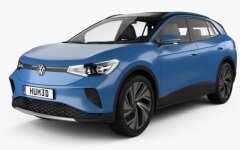 |
VW ID Models | (TBC) | 240V | (TBC) | TBC |
(*) The continuous V2L rating is 10A (2.2kW), measured via testing. The peak rating is 3.2kW.
Note: Not all vehicles listed are available in all countries or regions.
Load run-time with V2L
The amount of time an EV can power a load depends on the size of the load (W) and the EV battery level or state of charge (SoC). The average EV has a battery capacity of 65kWh, which is much larger than a regular 10kWh household battery used for solar energy storage. The large EV battery capacity enables a fully charged vehicle to easily power regular household appliances for several days at a time. For example, a 65kWh battery could technically power a 1000W (1.0kW) load for close to 60 hours, allowing for small conversion losses in the inverter. If the loads were very low, such as a laptop (60W) and refrigerator (140W), which draw less than 200W combined, an average EV battery could power the loads for almost two weeks before running flat.
Load rating of common appliances (W = Watts)
LED lights: 40 W
Laptop: 60 W
LED TV: 120 W
Refrigerator: 140 W
Portable heater: 2200 W
Example: How much energy is required to run all the loads listed above for 4 hours?
Add up the loads to find the total power = 40+60+120+140+2200 = 2560W or 2.56 kW
Multiply this by the amount of run time = 2.56 kW x 4 hours = 10.24 kWh (kilowatt hours)
In this example, this would only use around 16% of a 65kWh EV battery
How to use V2L for home backup Power
V2L is primarily designed to provide AC power while travelling or for backup power at home using extension leads. However, it can also be used as a backup generator in some countries. Many homes in rural areas that suffer from frequent blackouts already have what is known as an AC changeover switch (double-pole) to connect a backup generator to the household power supply. As the name implies, the transfer switch switches between two different AC sources and is required to ensure the generator and grid supply do not operate simultaneously, resulting in serious damage. The AC input is typically a 15A socket similar to those used on RVs or caravans. A 15A extension lead can transfer power from the vehicle to the household via the input socket and transfer switch.
Using a transfer Switch for dedicated backup circuits
Once the V2L supply is operating, the vehicle can supply the household independently of the grid. Of course, the energy consumption must be monitored to ensure it does not overload the vehicle's inverter. In most situations, separating independent backup load circuits from the general household circuits is essential. Otherwise, the V2L will trip off. The diagram above shows that separating backup load circuits will ensure the V2L operates successfully. V2L is a protected (RCD) supply for safety reasons, and the protection cannot be removed. In Australia and NZ, the electrical requirements may differ from those in other countries. Your licenced electrician must ensure the changeover switch operates correctly and safely using an appropriate changeover switch. (Note: In Australia and NZ, the Main Supply Neutral upstream of the MEN connection is NOT allowed to be switched. Ref AS/NZS 3010).
Important safety information - Any generation source, including V2L, connected to a home must be done so in accordance with all local electrical standards and regulations. Most home circuits are protected by safety switches (RCDs), which must be tested and functional no matter which AC electrical source is used. A double-pole AC changeover switch to supply isolated backup circuits is required.*
(*) A licenced electrical professional must install an appropriate AC transfer (changeover) switch and 15A socket. If connected incorrectly, the socket pins can become live, which is extremely dangerous and will damage your vehicle and potentially cause severe injury or electrocution.
Off-grid solar with V2L
Before explaining how V2L can be used with an off-grid solar system, I should explain some basic off-grid operating and design principles. As an experienced stand-alone solar power system (off-grid) designer, one of the critical factors that must be considered is the peak energy consumption (typically in winter) and the number of days of autonomy or the number of days the battery system can supply power during poor weather. Depending on the individual requirements, the autonomy period is generally 2 to 4 days based on the size of the off-grid system battery (total kWh) and solar array size (kW). More days of autonomy is always preferable, but the extra cost of a larger battery system can be significant and unaffordable; hence, a backup generator is nearly always required for prolonged periods of poor weather. The cost of a reliable 5kVA to 10kVA backup generator is relatively high.
Furthermore, it may only be needed for less than 1% of the year or several hours a week in winter during poor weather or extreme weather events. While essential, a backup generator often has a poor return on investment, not to mention the added fuel cost, maintenance and emissions. This is where a vehicle with V2L could potentially reduce the need for a large backup generator.
V2L as an alternative backup generator
While V2L is still being tested in off-grid systems, there is technically no reason why an EV with V2L could not significantly reduce or even replace a backup generator in some situations. An average (efficient) off-grid house uses 10 to 15kWh per day. In contrast, an average EV has a battery capacity of 65kWh, considerably larger than the battery capacity of most off-grid solar systems. Since an EV has such a large battery, it can be used as a buffer to absorb excess solar and provide backup power. However, whether or not this is achievable depends on two important variables:
Firstly, the vehicle with V2L must generally have enough battery capacity for backup power. If the EV is used regularly to travel long distances, it may not have adequate capacity to be used as a backup power source. On the other hand, if the EV is used for shorter trips and is parked at home during the day, it could be used for backup power in an off-grid or on-grid situation. Considering the average person drives less than 50km per day (10kWh) and a typical EV has a range of 350km (65kWh), a proportion of the battery capacity could be easily used for backup power, providing the vehicle is home in the evening.
If the solar array doesn't provide enough energy in winter to charge both the household battery and the EV battery, it cannot be relied upon as a backup power source (unless, of course, the EV can be charged from a nearby grid source). In temperate locations with short winter daylight hours, charging an off-grid battery system can often be difficult due to several factors, including excessive shading, snow cover and poor weather. In this situation, oversizing the solar array would ensure enough power is generated for household use and EV charging.
Bidirectional Inverters explained
Before going into detail about the interconnection of the V2L into an off-grid power system, it is important to explain the operating principles of bidirectional inverters. Most modern off-grid solar systems are built around a bidirectional inverter with an inbuilt charger, often called an inverter-charger. This is the heart and brain of an off-grid solar system. These inverter chargers are bidirectional in that they can manage power flow in two directions on both the load side (output) and the AC source side (input). The inverter-charger delivers power to the (AC) loads from various sources, including AC-coupled solar, the battery or an external power source such as a backup generator. Due to the bidirectional capability, most off-grid inverters are also grid-interactive, meaning they can export solar power to the grid and function as a grid-connected energy storage system, commonly known as a hybrid solar system.
Much like regular solar inverters, inverter-chargers can synchronise with the grid and become grid-following inverters that can export (inject) excess solar energy into the grid. The big difference is that inverter-chargers can also isolate from the grid via an internal contactor (isolation switch) and function as grid-forming (off-grid) inverters.
How to use V2L in an off-grid system
15A input socket with circuit protection and AC contactor controlled via the AC source to eliminate live pins safety risk.
There are two primary methods that can be used to connect an electric vehicle with V2L to an off-grid system:
Option 1 - Connect V2L to inverter AC input
The first method is to connect the V2L supply to the AC input on the off-grid inverter. In this setup, the inverter must be configured to use the V2L source to charge the off-grid battery system. The key is to ensure the inverter is set up correctly and does not draw more than the maximum output of the EV. In the case of the Hyundai Ioniq 5 or Kia EV6, this is a maximum of 3.6kW; however, to be safe, it is recommended to set it at roughly 80% of the maximum rating, or 3.0kW, to prevent stressing or overheating the vehicle's inverter. However, this setup can be technically difficult since the V2L is a ‘protected supply’, which can interfere with the household safety circuit breakers (RCDs).
A licenced electrical contractor can install a double-pole AC transfer (changeover) switch to connect a backup power source, whether a regular generator or a vehicle with V2L. A circuit breaker should also be used on all AC sources for circuit protection and to ensure the AC input source is not overloaded. Earthing and operation of all safety switches (RCDs) must also be installed and tested in accordance with all local electrical standards and regulations.
Option 2 - Install an isolated battery charger (Recommended)
The second method involves installing an isolated battery charger. This is simpler and will not interfere with the safety circuits. In this setup, shown in the diagram below, a separate battery charger directly charges the off-grid battery system and is completely isolated from the AC supply and circuits, meaning there are no earthing complications or risks. However, most modern off-grid systems use inverters with integrated chargers, so a separate battery charger needs to be purchased, which can be expensive. Additionally, this will only work with self-managed lithium or lead-acid battery systems such as Powerplus Energy, GenZ or Simpliphi. If your off-grid system uses a managed lithium battery system like BYD or Pylontech, which requires CANbus communications to operate, this will not be possible (unless the battery charger can be integrated into the CAN.Bus communication system).
Off-grid solar system using a separated battery charger to charge the battery via V2L to ensure the system meets safety regulations.
IMPORTANT: If using an input socket with an off-grid inverter-charger, there is a risk that the exposed pins can become live if there is a fault or the system is configured incorrectly. To reduce the risk of live pins, an AC contactor (2NO) activated by the input AC should always be used on the input socket. This ensures the socket and pins will only be active when a plug is connected and an AC source is present.
Using V2L to charge a home battery system *
Regular grid-connected energy storage systems use a hybrid inverter to charge a battery, provide backup power and export excess solar energy to the electricity grid. Most hybrid inverters can operate in several modes and charge the battery from the grid using cheap off-peak electricity via a charge schedule in the operating software. Technically, a vehicle with V2L could be used to charge a household battery system. However, most regular hybrid inverters have only one AC input and cannot distinguish between the grid and another stable AC source, so it would be very dangerous to use a regular hybrid system that could export solar power to the AC source, causing severe irreversible damage.
Hybrid Inverters with Dual AC inputs
Hybrid inverter with dual (isolated) AC inputs
Charging a household battery via V2L is only possible using a specific hybrid inverter with dual, isolated AC inputs. This enables the grid to connect to one dedicated AC input connection and an alternative AC source, such as a generator or V2L, to be connected to the other AC input. Only a few specialised hybrid inverters have dual AC inputs, including the Schneider XW Pro, the Deye SUN-SG04LP1 and the Deye SUN-8K (Single-phase) series. The FranklinWH AC-coupled battery is also capable of charging from dual AC sources. These inverters can be programmed to work with multiple AC sources and can be configured not to exceed the current draw limits of the EV with V2L.
* WARNING: An electric vehicle should NEVER be connected via an AC transfer switch to a regular hybrid, grid-connected inverter. There is a danger that excess solar will be (exported) forced into the vehicle, causing extensive damage and the possible risk of serious injury to individuals.
(*) It is important to emphasise that a vehicle with V2L should NEVER be connected directly to the electricity grid. V2L systems cannot synchronise with another AC source, such as the grid, and a direct grid connection is extremely dangerous. Doing this will cause severe damage and may result in serious injury!
Summary - V2L vs V2G vs V2H for backup power
V2L - Vehicle-to-load
As explained earlier, V2L is essentially a backup power system; the vehicle has a built-in DC to AC inverter that converts high DC voltage from the EV battery system to 240V AC power via 10A or 15A socket outlets. Once battery power is low, the EV can be recharged using a regular EV charger or DC fast charger. The key point here is that V2L operates independently of the grid, which is essentially a stand-alone power system.
When using V2L in conjunction with an off-grid power system, to safely and effectively integrate V2L with an off-grid home requires the vehicle’s AC supply to be connected to a smart control system such as an off-grid inverter or an automatic changeover switch as described above.
V2G - Vehicle-to-grid
Vehicle-to-grid (V2G) is used to export power into the electricity grid network and requires a dedicated bidirectional EV charger that can synchronise with the grid. For any system to inject power into the grid, it must do so at a voltage slightly higher than the grid voltage; this is precisely how all solar inverters operate and export excess solar energy into the grid. For example, if the grid were operating at 235V, the inverter (or charger) would need to 'push' power out at 236V or higher for the current to flow in the right direction. For this reason, V2G cannot technically operate in an off-grid situation, as the off-grid system cannot absorb or regulate the excess power from the vehicle. Additionally, V2G functions are controlled externally via the electricity network service provider, usually in conjunction with a VPP (Virtual power plant) program. Unless an external control signal could somehow override the vehicle’s V2G system, it would be impossible for it to function in an off-grid situation.
V2H - Vehicle-to-home
Much like V2G, vehicle-to-home (V2H) systems also require a specialised bidirectional charger and other equipment to operate. However, what sets V2H apart from V2G is that it's designed to function independently from the grid. A V2H backup system, like the Ford home integration system used with the new Ford F150 EV, is essentially an off-grid (grid-forming) system that can island from the electricity network during a grid outage. The operating principle is very similar to a hybrid solar system, where the bidirectional charger operates much like a hybrid inverter. Common hybrid inverters are bidirectional, as they can import and export energy from the grid. The main difference is that the battery is contained within the electric vehicle, and no solar is required.
Disclaimer: This is to be used as a guide only. All electrical installations must comply with local, state and country regulations & standards. All EV chargers, solar and battery storage systems must be installed by a licensed electrical professional.

